January 15 2026, Marcus Schenk
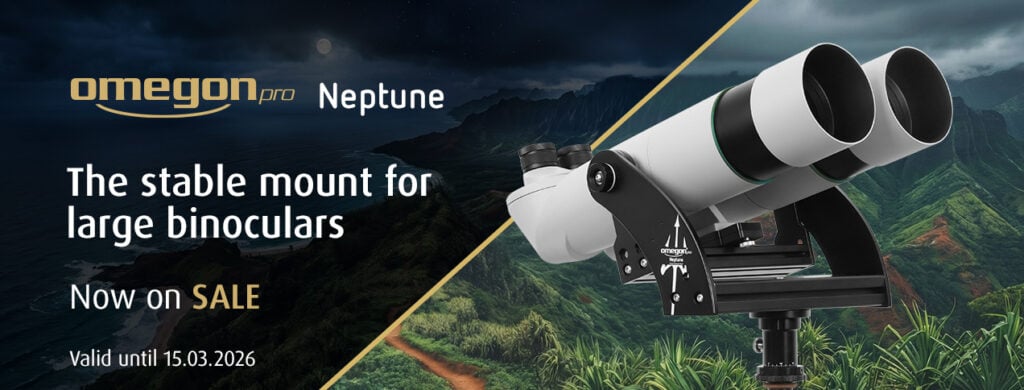
With two eyes through the universe: Discover our Omegon Neptune premium fork mount now and save €200 on every version. Whether solo or as a set with large binoculars. The Neptune stands for buttery-smooth movement and high stability during every observation.
Choose your preferred version:
Sets with Brightsky binoculars:
Promotion period: 15/01 – 15/03/2026. While stocks last!
Tags: binoculars
Posted in Sale|Sale|Sale
»
October 1 2025, Stefan Rieger

We are clearing our warehouse, so from 1 October to 27 November 2025, you will receive a 20% discount on all Fjäll Räven items in stock.
Come and take a look! But please note: this offer is only valid while stocks last and until 27 November 2025!
Tags: Outdoor, Clothing, Fjäll Räven
Posted in Sale|Sale
»
September 30 2025, Marcus Schenk
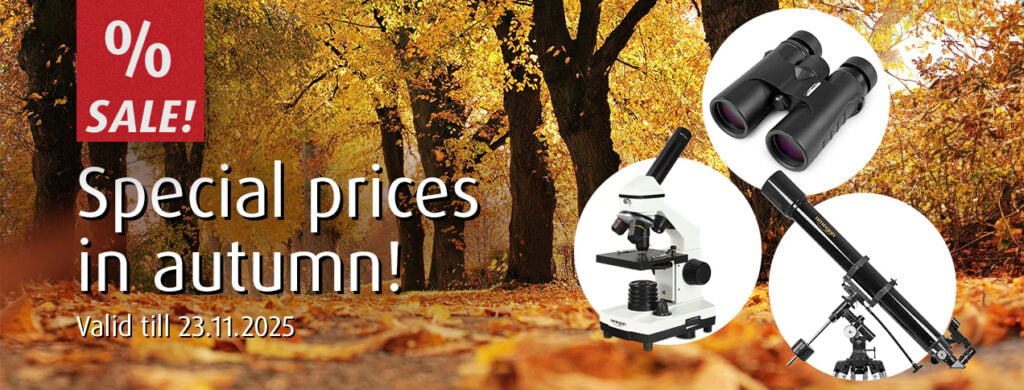
The leaves and prices are falling this autumn!
You can find our colorful selection of special offers here in the shop. Get them now!
The offer is valid from September 30rd to November 23th, 2025 and only while supplies last!
Tags: Sale
Posted in Sale|Sale|Sale
»
August 14 2025, Maximilian Weißenbach

Bring the classroom experience home! For a short time, Levenhuk is lowering the price of the LabZZ and Rainbow 2L microscope series.
Act fast – offer valid until September 7, 2025!
Tags: Mikroskopie, Levenhuk, Rainbow 2L, LabZZ
Posted in
»
August 13 2025, Stefan Rieger
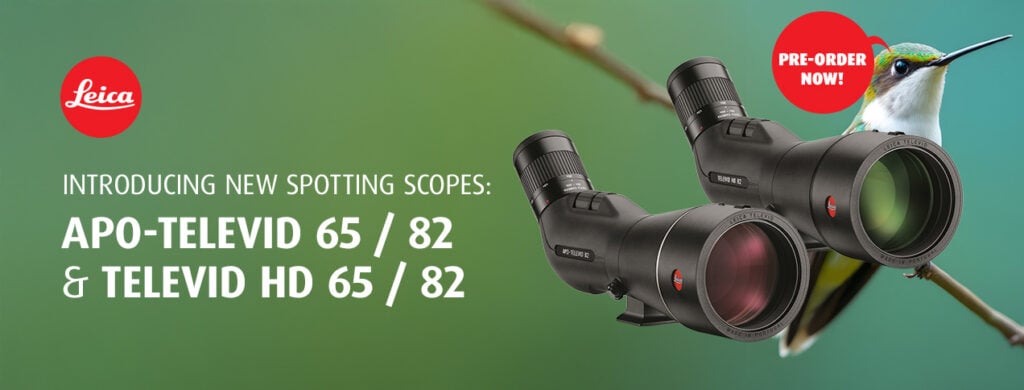
At the Global Birdfair, Leica the optics specialist from Wetzlar not only presented a new spotting scope. No, two new spotting scope series, each with two objective lens diameters, were presented.
The new APO-Televid 2025 is available with 65mm and 82mm objective lens diameters. Either individually or as a set with the popular 25-50x wide-angle zoom eyepiece. The most important new feature is the improved optics with apochromatic correction and High Lux Pro (HLP) system. Proven dual focus, magnesium housing with full rubber armouring and 5m waterproofness with Aqua-Dura coating.
This revised spotting scope model is complemented by the more affordable Televid HD. Leica combines this in a set with the new 20-60x zoom eyepiece. The sacrifice of maximum quality is of course reflected in the purchase price. Leica has also introduced a range of new accessories, such as a stay-on-case. A new tripod set, which was developed in collaboration with Leofoto, and new smartphone adapters.
These are the new sets:
But it’s best to compare for yourself and get one of the first examples right away!
Tags: APO-Televid, birdwatching, spotting scopes, hunting, Nature Watching, Televid HD, Leica
Posted in New Products|New Products
»
August 13 2025, Stefan Rieger
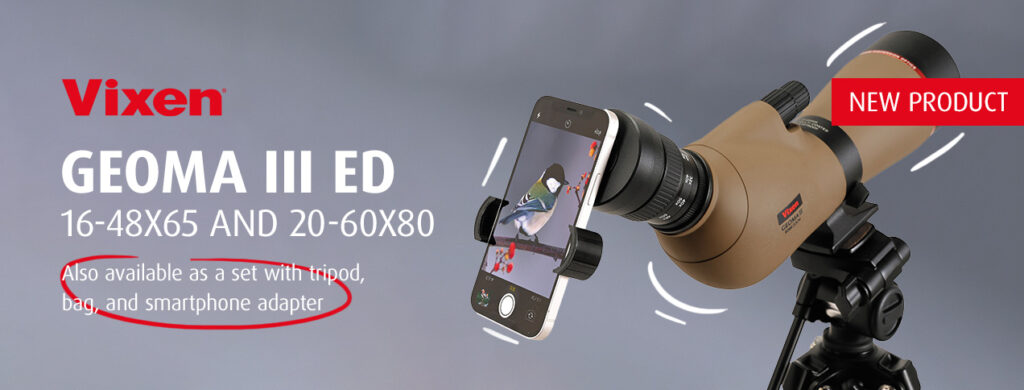
Vixen, the traditional Japanese manufacturer of high-quality telescopes, has introduced a new series of spotting scopes for nature observation.
The Geoma III ED series. This new spotting scope series offers high-quality ED optics and a generous scope of delivery in the medium price range.
Available in two versions and each in a set with zoom eyepiece, carrying case and smartphone adapter. Also available as a set including a high-quality aluminium tripod.
Get one now from the first delivery!
Tags: nature observation, birdwatching, spotting scopes, hunting, Geoma III ED, Vixen
Posted in New Products|New Products
»
August 1 2025, Marcus Schenk
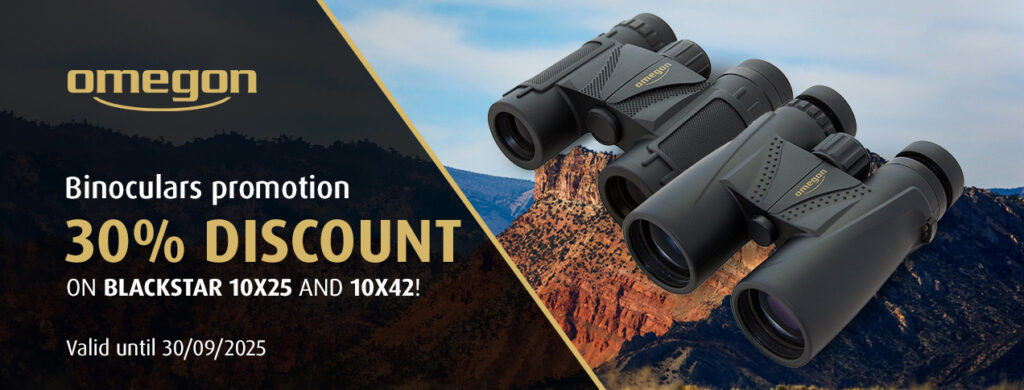
Time to keep your eyes open again! With our summer promotion, you save a whopping 30% on the popular Omegon Blackstar binoculars 10×25 and 10×42 – only until September 30.
Whether you are out walking, traveling, or taking a spontaneous look at the night sky – these compact roof prism binoculars are always at hand. Clear, sharp, reliable and so robust that they belong in every backpack. Especially in this price range, it is rare to find such a great combination of mechanics and optics.
Don’t miss out – a good pair of binoculars is something everyone should have at home.
Offer valid from 1.08–30.09.25 – while supplies last.
Tags: Binocular
Posted in Sale|Sale|Sale
»
July 25 2025, Stefan Rieger
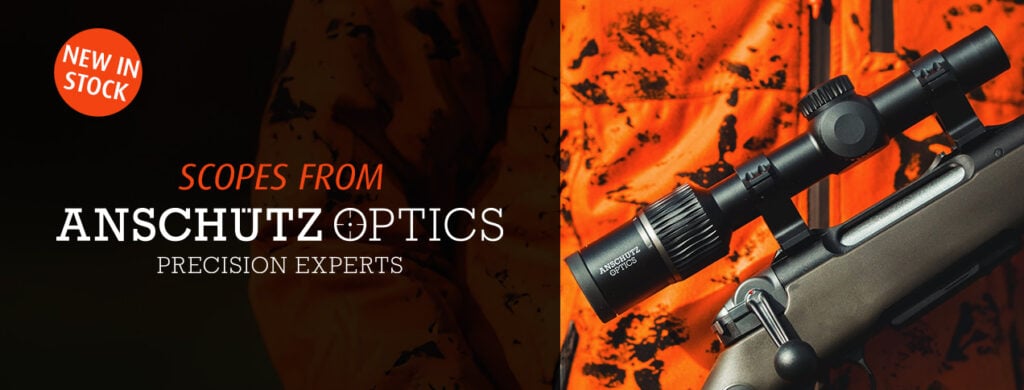
For many decades, sport shooters and hunters have known the ‘Anschütz’ brand as a precision manufacturer of weapons for shooting and hunting. At the latest during the annual biathlon competitions, this brand should have caught the eye of many athletes from all over the world.
Now Anschütz has decided to expand its range to include riflescopes. There are 4 different series and two red dot sights to start with:
- Classic: riflescopes with 1″ centre tube for use on small calibre rifles, or with existing mounts
- Classic Pro: riflescopes for classic hunting use with 30mm centre tube, L4A reticle and classic design
- Performance Pro: 30mm tube, quick adjustment, some with tactical reticles.
- Air Pro: Specially developed and tested for use with air rifles for sport shooting.
- Red dot sights Reflex Pro: Classic with Weaver interface for fast target acquisition.
In our opinion, all products offer a really fair price/performance ratio!
Tags: riflescopes, Riflescope, Anschütz Optics
Posted in New Products
»
April 20 2025, Stefan Rieger

Some people may not be familiar with this name. But Nocpix is no less a company than InfiRay, which is already a well-known brand and one of the market leaders. In order to differentiate its business areas a little more, this new brand was created for the target group of nature observers, outdoor enthusiasts and hunters.
But what does the name stand for? Nocpix is the syllabic abbreviation of ‘Nocturnal’ and ‘Pixel’ and is intended to symbolise the combination of the latest technological innovations with a passion for nature and hunting. This has resulted in several new product series:
- VISTA and VISTA LRF: state-of-the-art thermal cameras with an extremely high-resolution display and a detection range of up to 2600 metres. Particularly noteworthy is the S50R model with a 1280 VOx sensor with a NETD of < 15mK.
- LUMI and LUMI LRF: Hand-held devices in three vers. Quality levels. 256, 384 and 640 sensor. From the entry-level device P13 to the professional model with 35mm lens, 640 sensor and laser rangefinder up to 800m range.
- The QUEST series was first presented at this year’s IWA. These are binocular ‘thermal imaging binoculars’ with an integrated rangefinder.
Particularly interesting for customers who can do without the digital night vision technology of FUSION devices.
- Finally, Nocpix also offers the M6T25S dome camera. This camera is ideal for scanning large areas from the vehicle for heat sources, whether for hunting or surveillance.

It’s best to take a look at the range!
Tags: thermal imaging, thermal imaging cameras, Nocpix, InfiRay
Posted in New Products|New Products
»
April 9 2025, Stefan Rieger

Spring is in full swing. The trees are budding. In every bush and branch you can hear the voices of the returning migratory birds and nest building has begun.
If you want to buy a new pair of ZEISS binoculars in time for the start of spring, we are working with ZEISS to make your decision a little easier.
ZEISS will give you a refund of up to 400 £ / € 450 after your purchase. The exact amount depends on the model.
Once again in detail:
Here you will find more information about the promotion and the countries eligible to participate. You can also register your new binoculars here!
So take advantage of this promotion between 01.04.2025 and 09.06.2025 and get money back from ZEISS!
Tags: Binocular, SFL, Terra, ZEISS, Conquest, victory, Carl Zeiss
Posted in Sale|Sale
»
April 7 2025, Stefan Taube

Celebrate the start of the most beautiful season with us! Make yourself and your loved ones happy!
We offer selected gifts for young nature lovers and old hands alike:
Be inspired by our ideas and discover the reawakening of nature!
Browse through our Easter gift ideas and give yourself and your loved ones a little treat!
Tags: Omegon, telescope, Binocular, gift idea, Skywatcher
Posted in Sale
»












